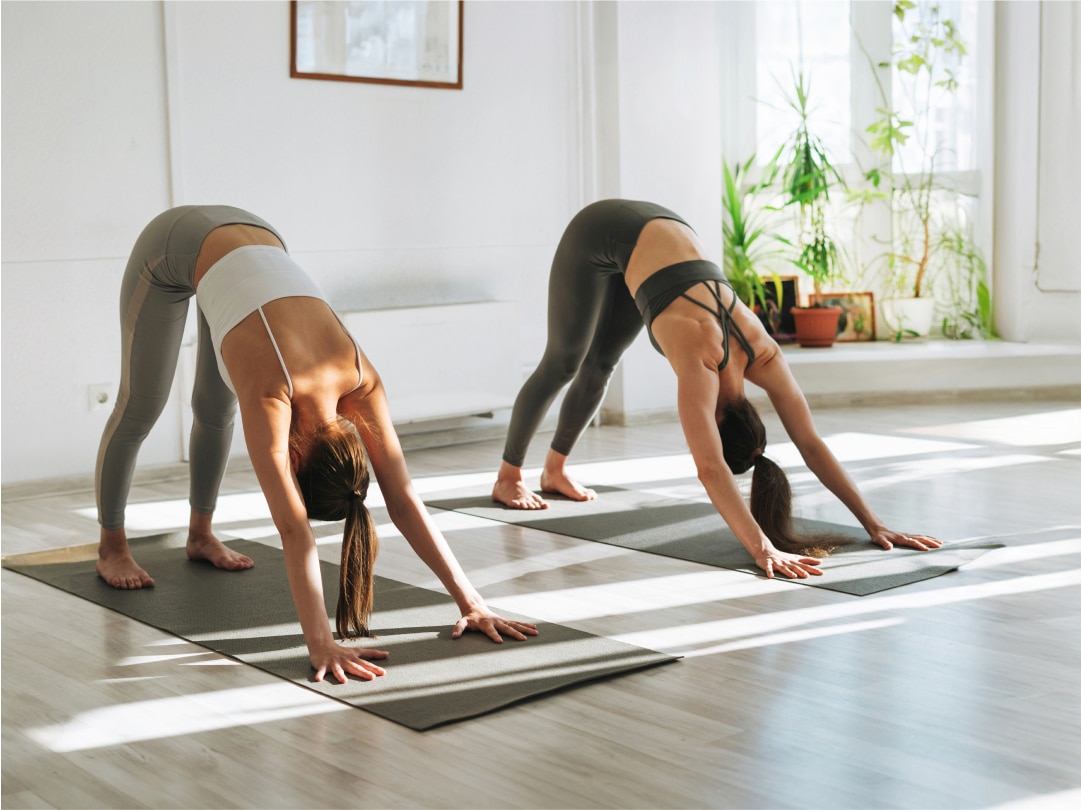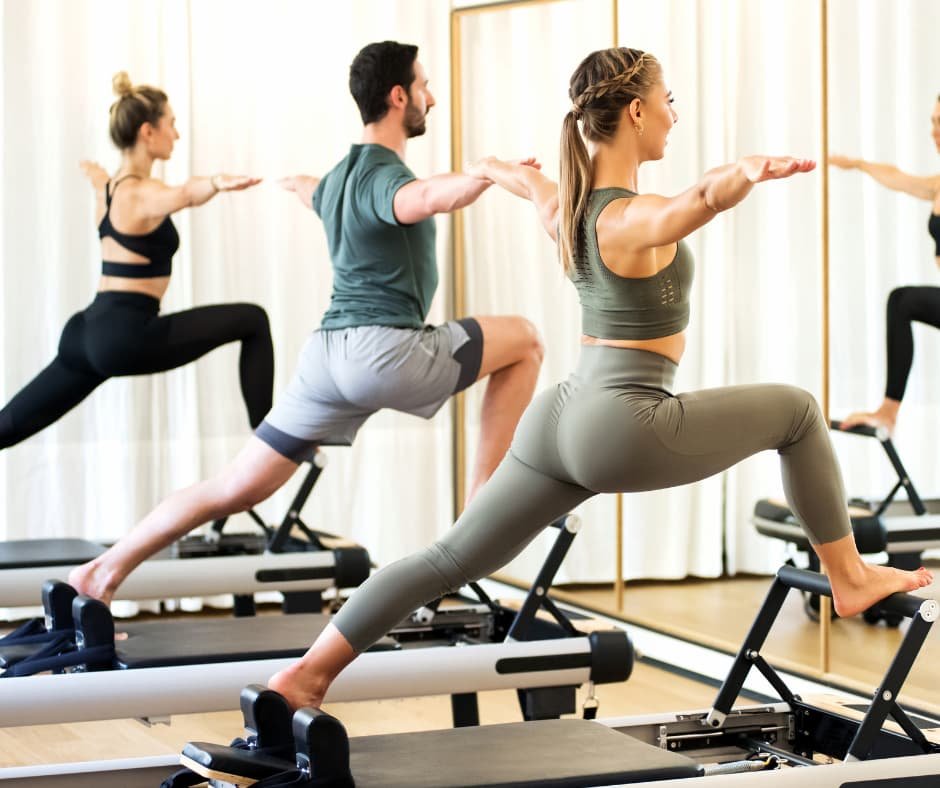Finding the right type of Pilates can be a game-changer in your fitness journey. Whether you’re a beginner or an experienced practitioner, understanding the difference between Reformer Bed Pilates and Mat Pilates is essential. That said, let’s dive into the ins and outs of both practices to help you decide which might suit you best.
Understanding Pilates: An Overview
Before we delve into the specifics of each type i.e reformer beds and mat Pilates, it’s important to have a solid grasp of what Pilates is all about. Created by Joseph Pilates in the early 20th century, this unique exercise regimen focuses on strengthening the body’s core, improving flexibility, and enhancing overall physical strength. Pilates incorporates controlled movements that emphasize proper alignment and breathing, appealing to a wide range of fitness enthusiasts.
The core principles of Pilates include concentration, control, centering, precision, breathing, and flow. These principles aim to ensure that each movement is performed with intention and correct technique. Whether on a reformer or a mat, practitioners can expect to experience improved muscle tone and body awareness. Additionally, Pilates is often praised for its ability to promote mindfulness, as the focus on breath and movement encourages individuals to connect with their bodies and cultivate a deeper sense of awareness in their physical practice.
The Reformer Bed: An Introduction
The Reformer Bed is a piece of specialized equipment designed to assist in performing Pilates exercises. It consists of a sliding carriage, springs for resistance, and adjustable pulleys. This setup allows for a wide variety of exercises that can target multiple muscle groups while providing support and guidance.
One of the key advantages of using a reformer is the ability to customize resistance. Beginners can start with lighter springs for easier movements, while more advanced practitioners can increase the resistance to make exercises more challenging. The machine’s versatility makes it suitable for various fitness levels. Moreover, the reformer can accommodate different body types and sizes, allowing for modifications that cater to individual needs, making it an inclusive option for everyone from athletes to those recovering from injury.
Benefits of Reformer Bed Pilates
Reformer Bed Pilates offers numerous benefits that can significantly enhance your workout experience. Firstly, the support provided by the reformer can help you maintain better alignment throughout your exercises, which is crucial for preventing injuries. Additionally, the varied resistance levels allow for progression at your own pace, ensuring a safe and effective workout.
Another advantage is the ability to perform a broader range of exercises. The reformer’s design allows for movements that may be difficult or impossible to execute on a mat. This versatility can lead to exciting workouts and keep you motivated to continue practicing. Furthermore, the reformer’s unique ability to facilitate both strength training and flexibility work in a single session means that practitioners can achieve a well-rounded fitness routine, enhancing not only their physical capabilities but also their overall athletic performance. As a result, many athletes incorporate reformer Pilates into their training regimens to improve their balance, coordination, and core strength, ultimately leading to better performance in their respective sports.

Mat Pilates: A Different Approach
Unlike Reformer Bed Pilates, Mat Pilates focuses on body weight exercises performed on a mat. Although it may seem simpler, mat Pilates can be just as challenging and effective in building strength and flexibility. Exercises are often modified to ensure everyone can find a variation that suits their level of fitness.
The Essence of Mat Pilates
Mat Pilates encourages you to engage your core without the assistance of specialized equipment. This means you’ll focus solely on your body weight for resistance. While this might sound limiting, it actually encourages a deeper understanding of your body mechanics and may lead to profound strength gains over time.
Furthermore, mat classes are often more widely available and typically less expensive than reformer sessions. This accessibility makes mat Pilates an excellent option for those just starting or those who prefer to practice at home. Many practitioners find that they can easily incorporate mat Pilates into their daily routines, whether it’s a quick morning session to kickstart their day or a calming evening practice to unwind.
Benefits of Mat Pilates
One of the biggest benefits of mat Pilates is the emphasis it places on body awareness and control. Since there is no reformer to assist you, practitioners must engage their muscles actively to execute each movement correctly. This increased awareness can lead to improved balance and coordination, enhancing your overall fitness level.
Additionally, mat Pilates often includes a variety of exercises targeting different parts of your body in a single session. This holistic approach can leave you feeling energized and accomplished, regardless of your fitness level. The versatility of mat Pilates allows for creative combinations of movements that can address specific areas of concern, such as strengthening the lower back or enhancing hip flexibility. Many instructors also incorporate breathing techniques that not only support the movements but also promote relaxation and stress relief, making each session a comprehensive workout for both body and mind.
Moreover, the social aspect of group mat classes can enhance motivation and commitment. Practicing alongside others fosters a sense of community and accountability, encouraging participants to push their limits and stay consistent with their practice. Whether in a studio setting or through online classes, the shared energy and encouragement can transform a solitary workout into an engaging experience, making it easier to stay dedicated to your fitness journey.
Choosing What’s Best for You
So, how do you decide which form of Pilates is right for you? It largely depends on your personal preferences and fitness goals. If you’re looking for a supportive environment that can help you learn the basics of Pilates with tailored resistance, a reformer class may be the way to go. The reformer machine, with its adjustable springs and straps, allows for a wide range of exercises that can be modified to suit any fitness level, making it an excellent choice for beginners and seasoned practitioners alike.
On the other hand, if you prefer a more accessible, body-weight-focused routine, mat Pilates might suit you better. It can be done in a group setting or even at home, making it a flexible choice that fits various lifestyles. Mat Pilates emphasizes the use of your own body weight for resistance, which can enhance your understanding of core engagement and body alignment. This form can also be easily adapted to include props like resistance bands or small weights, adding variety and challenge to your workouts.
Consider Your Goals
As with any fitness program, think about your personal goals. Are you aiming to increase core strength, improve flexibility, or maybe even rehabilitate an injury? Reformer Pilates is particularly beneficial for those looking for a low-impact way to strengthen muscles while preventing strain. The controlled movements on the reformer can help you isolate specific muscle groups, making it easier to target areas that need extra attention. This is especially useful for individuals recovering from injuries, as the reformer provides support and stability while you work to regain strength.

Alternatively, if you’re interested in building body awareness and integrating Pilates into your daily life without equipment, mat Pilates could be your best bet. This style encourages a deeper connection with your body, allowing you to focus on breath control and movement precision. Many practitioners find that mat Pilates enhances their overall fitness routine, as it can be seamlessly incorporated into other forms of exercise, such as yoga or strength training. Additionally, the skills learned in mat Pilates can translate into improved performance in sports and daily activities, making it a versatile choice for anyone looking to enhance their physical capabilities.
Final Thoughts
Ultimately, both Reformer Bed and Mat Pilates offer unique benefits, and your choice will depend on your personal needs, preferences, and fitness objectives. Some people even find it advantageous to incorporate both methods into their routine to enjoy the best of both worlds. Mixing reformer and mat classes can provide a comprehensive approach to Pilates, ensuring that you experience the varied benefits each has to offer.
Remember, the most important aspect of any workout is that you find it enjoyable and fulfilling. Explore your options, try classes if possible, and choose the Pilates style that resonates with you. Engaging with a community of like-minded individuals can also enhance your experience, providing motivation and support as you embark on your Pilates journey. Happy exercising!
Related article: The Ultimate Guide to Choosing a Reformer Pilates Bed
